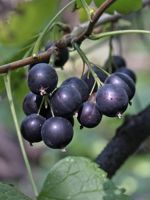Mon-Fri 9am - 5pm Mountain time
Common Caragana vs Northern Black Currant
Caragana arborescens
Ribes hudsonianum
CUSTOM GROW
Common Caragana is a fast growing shrub that's known for its exceptional hardiness and drought tolerance. Although it's most commonly planted in shelterbelts, Common Caragana is also an excellent hedge or feature shrub.
Note: in warmer areas, this species can be difficult to contain once planted. Use the right plant in the right place.
Northern Black Currant is a native deciduous shrub found across Canada and the northern United States. Dark purple to black berries that ripen in summer and provide food for wildlife and humans. Fragrant yellow-green flowers that attract a wide variety of pollinators.
This shrub is well adapted to moist soils and can even survive periods of flooding. It has an interesting bronze colour in fall.
Common Caragana Quick Facts
Northern Black Currant Quick Facts
In row spacing: 0.3 m (1.0 ft)

